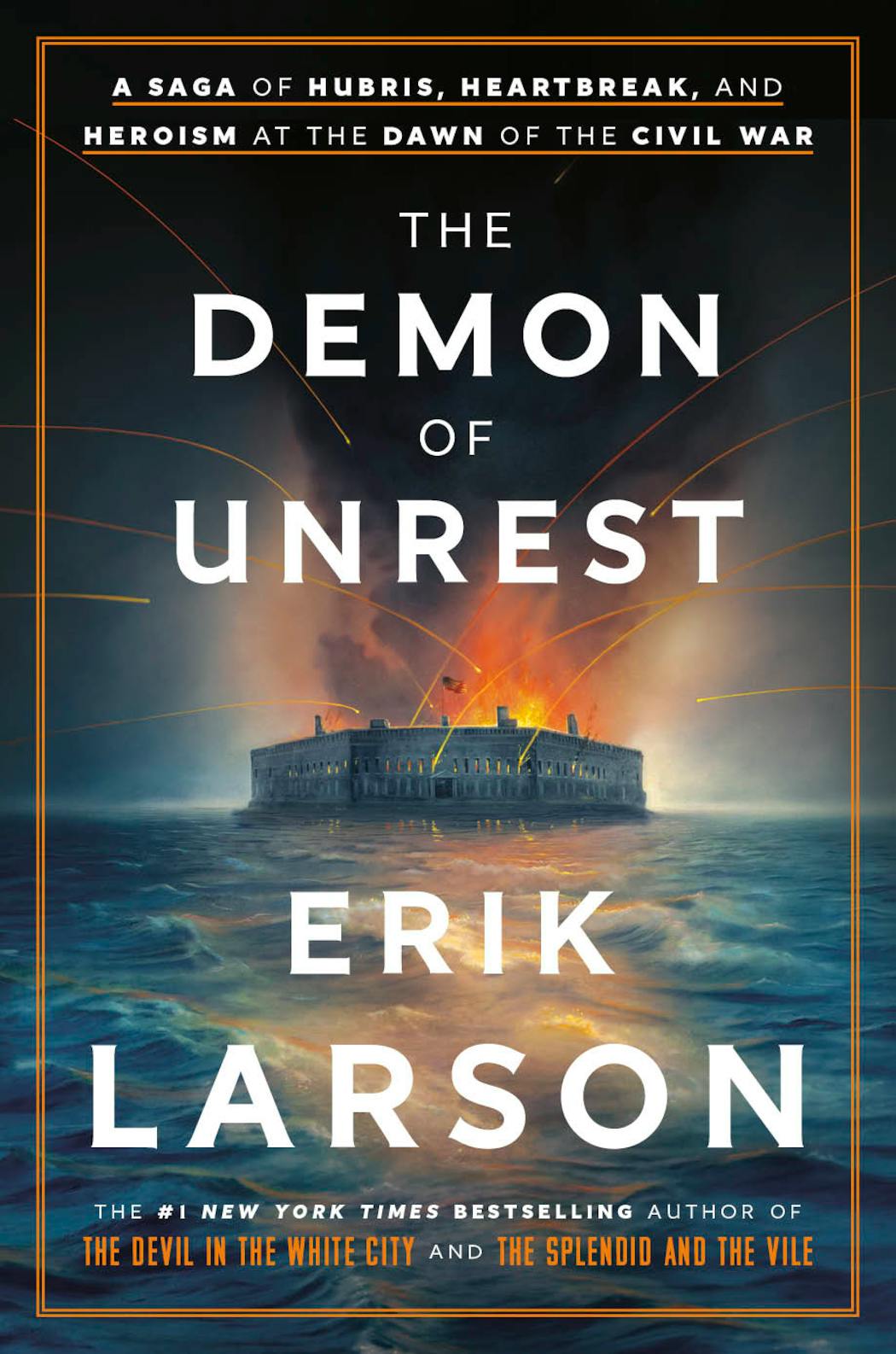We know the American Civil War's stories of carnage and heartbreak from movies, biographies and Ken Burns, but the most interesting thing about the latest from "The Devil in the White City" writer Erik Larson is that it covers the run-up to war, the events that came before more than 600,000 people died.
There may be a tendency to think of the war in the same breath as Abraham Lincoln, but Larson, whose history-but-make-it-fun books include "Isaac's Storm" and "The Devil in the White City," argues it had much more to do with what Lincoln's predecessor, James Buchanan, did or did not do. Mostly the latter. Buchanan is president for more than half of the 499-page book, in which he's portrayed as lazy, underqualified and bizarrely ambivalent about slavery.
As in his other work, Larson employs details that rescue the humanity of historic figures we're more likely to think of as statues than people: When Lincoln, about to take his oath of office, couldn't figure out what to do with his top hat, bitter rival Stephen Douglas held it for him with a smile. Other details bring moments to life: Larson describes the half-built Washington Monument, from which an American flag flew in supposed triumph while states began to secede, as "more a symbol of failure."
In a foreword, Larson indicates he was already at work on "Demon" when the events of Jan. 6, 2021, unfolded. But, even if that weren't the case, some events in "Demon" would seem shockingly familiar, including a violent, organized effort to seize control of our nation's capitol in order to prevent a new president from taking office.
It's alarming to read about this divided country going down a similar path more than 150 years ago and, seemingly, learning nothing from it. The immediacy of the story in "Demon" — as well as on-the-ground reports from inside South Carolina's Fort Sumter, an early Union bulwark — lend the book vigor, especially in the first 300 pages.
The last 200 pages, as Lincoln takes office and assembles the team that would help him strategize through war and into peace, aren't as gripping. Larson sometimes repeats himself (I lost count of how many times he wrote that Lincoln couldn't spell "Fort Sumter"). And, as he notes in his acknowledgments, much of this territory was covered in Doris Kearns Goodwin's magnificent "Team of Rivals."
When in doubt, Larson returns to stories that reveal human foibles. He quotes extensively from the diaries of Mary Chesnut, whose husband was a senator until South Carolina seceded (Burns also used her diaries). Gossipy, even catty, Chesnut emerges as just the sort of person you'd chuckle with over tea while making sure to reveal none of your own secrets.
The diaries also help Larson remind us that, for a time, the South was a foreign country. Although the years have settled Lincoln into near-sainthood, Chesnut has no kind words for him or for the bureaucracy that she sees as robbing her of a way of life — although she cares little for the lives of the 450 humans her family enslaved.
I wish "Demon" told us more about Black people of the time. There are references to enslaved men fighting for the South and about others fleeing plantations, but their untold stories will have to wait for another book.
The Demon of Unrest
By: Erik Larson.
Publisher: Crown, 499 pages, $35.
Singing, ceremonies and straw hats: Olympics opening ceremony in Tahiti centers Polynesian culture

Three 101-year-old friends recall fond memories in 1940s Alexandria
Celine Dion makes musical comeback at Paris Olympics with Eiffel Tower serenade




